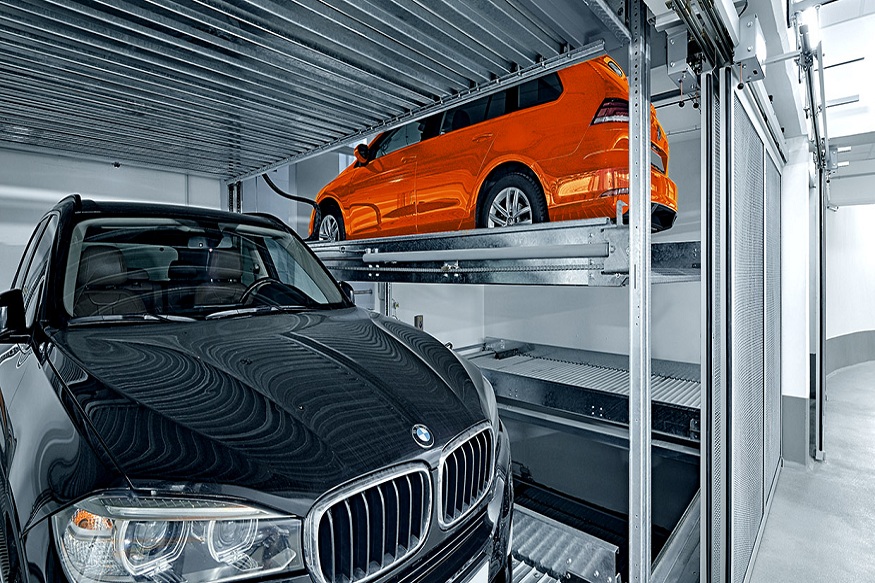
Urban congestion and the growing number of vehicles on the road have put immense pressure on city infrastructure, especially in areas related to vehicle storage. Traditional parking methods, while once sufficient, now struggle to keep up with the pace of modern demands. To combat this, innovative technologies have emerged to transform the way we approach car parking. Among the most effective of these advancements is the semi automatic parking system, which offers a blend of automation and human interaction to create a smoother, more efficient parking experience.
How the Semi Automatic Parking System Works
A semi automatic parking system combines mechanical automation with minimal user interaction, making it a practical solution for residential buildings, commercial complexes, and even public garages. Unlike fully automated systems that require no driver involvement once the vehicle is handed off, this system requires the driver to perform limited tasks, such as aligning the car onto a platform or initiating the parking command through a control panel.
Once engaged, the semi automatic parking system takes over, moving the vehicle vertically or horizontally using a motorized platform. These platforms are designed to optimize the use of space by stacking cars in multi-level configurations or by shuffling them into tight spaces where conventional parking would be challenging. By doing so, the system increases the number of vehicles that can be stored in a given area without compromising safety or accessibility.
This approach is ideal in scenarios where space is limited but full automation isn’t feasible due to budgetary or structural constraints. It offers a middle ground, providing significant automation benefits without requiring the infrastructure investment of a fully automatic alternative.
Benefits Driving Adoption in Urban Areas
The semi automatic parking system is gaining popularity in cities where land is scarce and expensive. One of its primary advantages lies in its space-saving design. Traditional parking layouts demand ample clearance for doors to open and for drivers to enter or exit the car. With this system, vehicles are placed closer together since there’s no need for human access once the car is secured on the platform. This allows developers to include more parking spots in the same footprint, which is a valuable asset in high-density zones.
Another notable benefit is the reduction of time and stress typically associated with finding a parking space. In crowded urban environments, circling blocks or ramps in search of a vacant spot can be time-consuming and frustrating. A semi automatic parking system streamlines this process by guiding drivers directly to a designated loading area, from which the system handles the rest.
Additionally, safety is enhanced. Since users have minimal contact with the internal layout of the parking area, the risks of accidents, door dings, or theft are significantly reduced. The vehicles remain untouched by human hands once they are positioned on the platform, lowering the chances of damage or vandalism.
Environmentally, the system also makes a positive impact. By reducing the time vehicles spend idling while searching for spaces, the amount of emissions released into the air is minimized. Some systems even operate with energy-efficient motors or are integrated with renewable energy sources, making them a more sustainable choice for eco-conscious cities and developers.
Challenges and Design Considerations
Despite its benefits, implementing a semi automatic parking system is not without challenges. The initial cost of installation can be higher than that of a traditional parking structure due to the machinery, electrical systems, and construction modifications needed. However, these costs are often justified by the long-term gains in space efficiency and user convenience.
Another factor to consider is user education. While the system is relatively intuitive, drivers must still understand how to properly position their vehicles, operate the control panels, and follow safety guidelines. This can be addressed through clear signage, instructional displays, or brief training during the initial rollout of the system in residential or commercial developments.
Maintenance is another critical aspect. Regular inspections and servicing of mechanical parts, sensors, and safety systems are necessary to ensure consistent and safe operation. Any mechanical failure could lead to delays or access issues, which is why many providers offer support contracts to manage these responsibilities on behalf of the property owners.
Space requirements also play a role in determining whether a semi automatic parking system is suitable for a particular site. While the system is designed to save space, it still requires a certain minimum volume and structure for vertical or horizontal vehicle movement. Retrofitting an existing building may require significant changes to accommodate the system, which can impact cost and project feasibility.
Comparing Manual, Semi-Automatic, and Fully Automatic Systems
The world of parking solutions now includes a spectrum ranging from entirely manual to completely autonomous. Traditional manual parking structures require human drivers to navigate, park, and retrieve their cars without any technological assistance. These are still prevalent but inefficient in terms of space and often create bottlenecks during peak hours.
At the other end are fully automatic parking systems, where drivers leave their vehicle at an entry point, and the system does all the work of transporting and storing the vehicle within the structure. These systems can be highly space-efficient and fully integrated into smart buildings but usually come with high upfront costs and more complex maintenance needs.
Sitting in between, the semi automatic parking system offers a pragmatic balance. It reduces the reliance on human drivers without demanding the technological sophistication of a fully automated setup. This makes it particularly attractive for mid-sized buildings, mixed-use developments, and areas where the cost of full automation isn’t justified but where efficiency and modernity are still priorities.
Because it allows a higher number of parking spots in compact spaces and requires only partial automation, the semi automatic parking system often serves as a stepping stone for developers and city planners aiming to gradually upgrade their infrastructure. It’s a scalable solution that can evolve over time, allowing future transitions into more advanced systems as technology and budgets allow.


